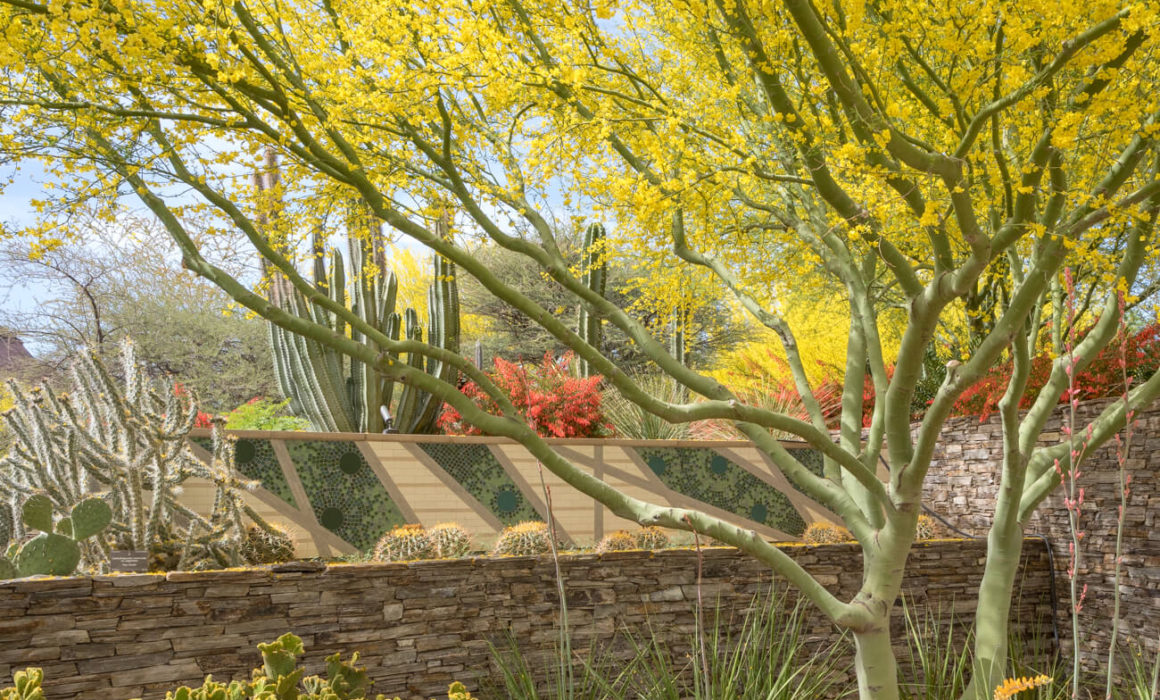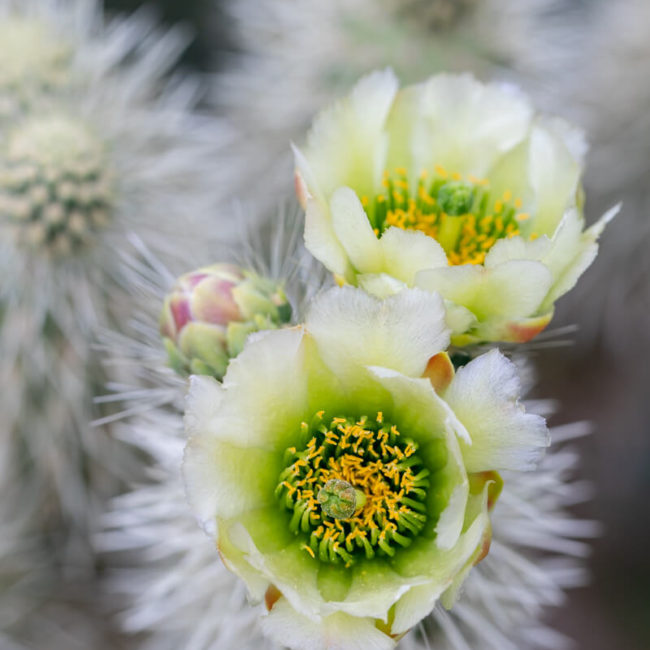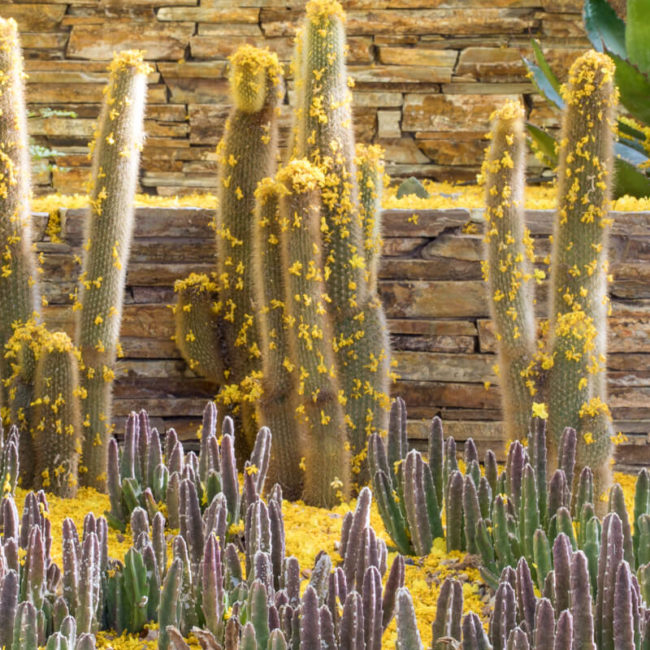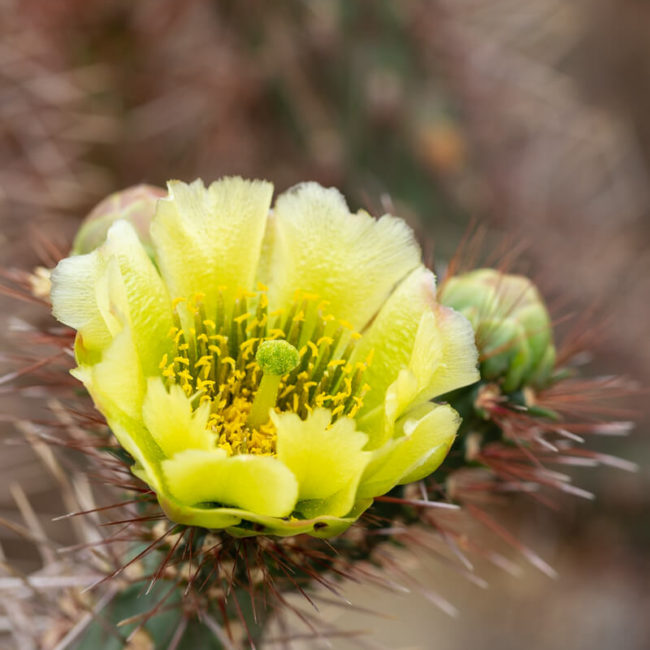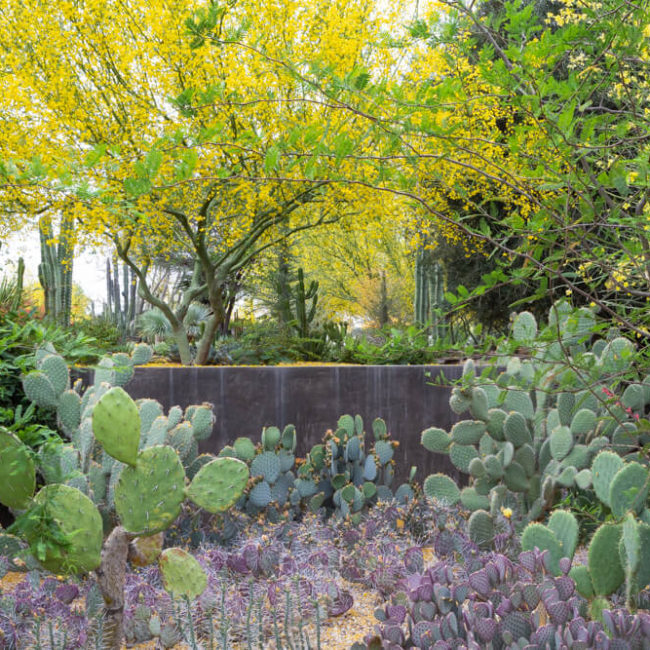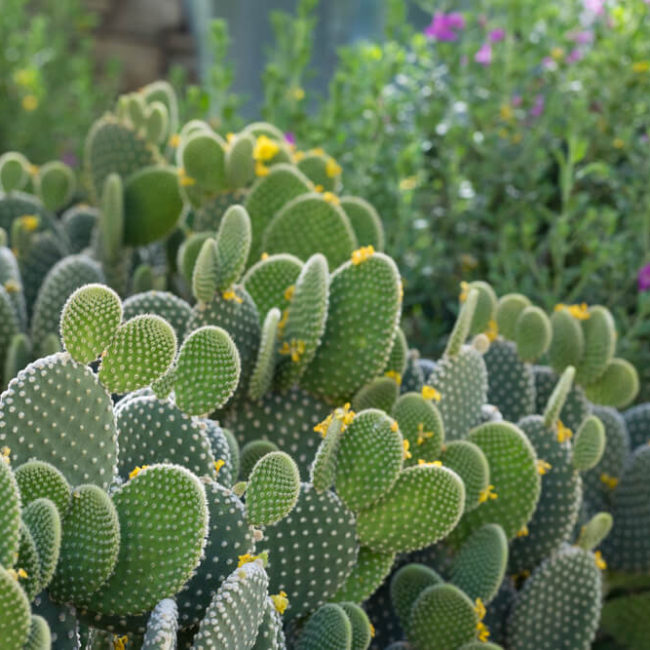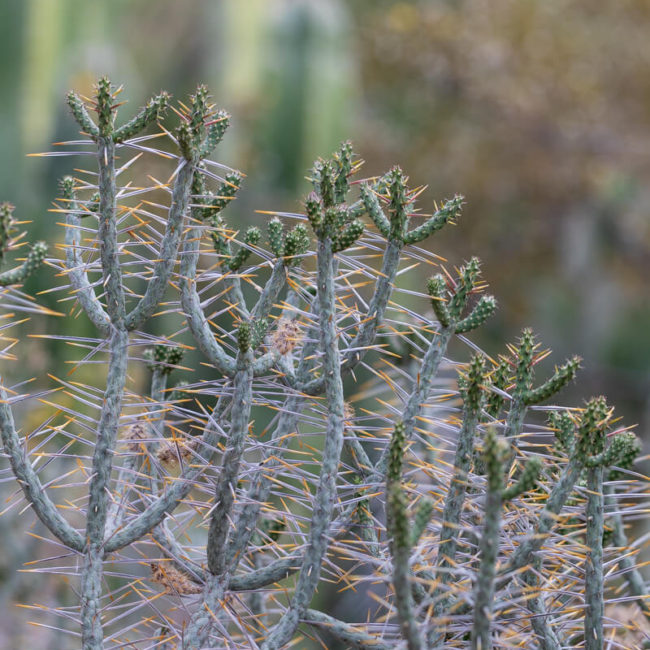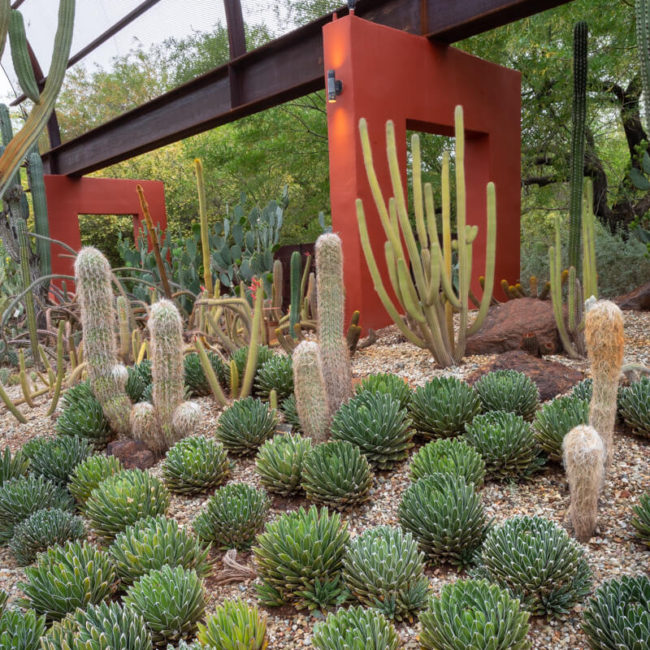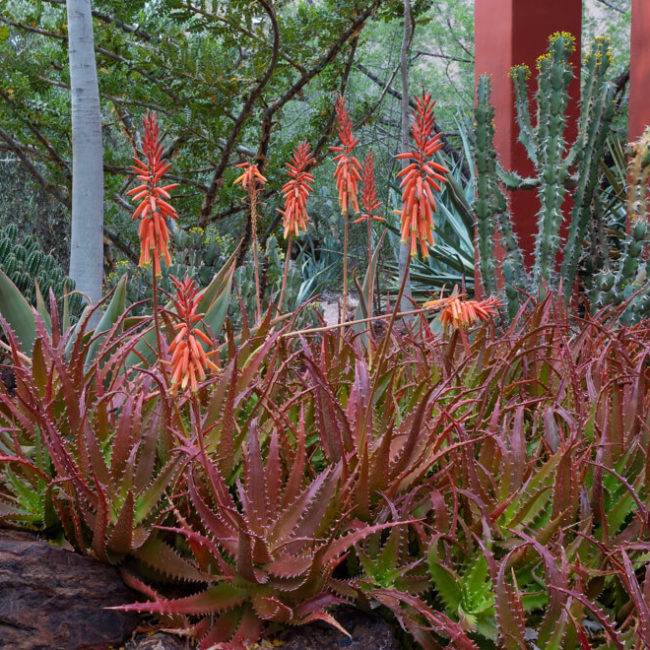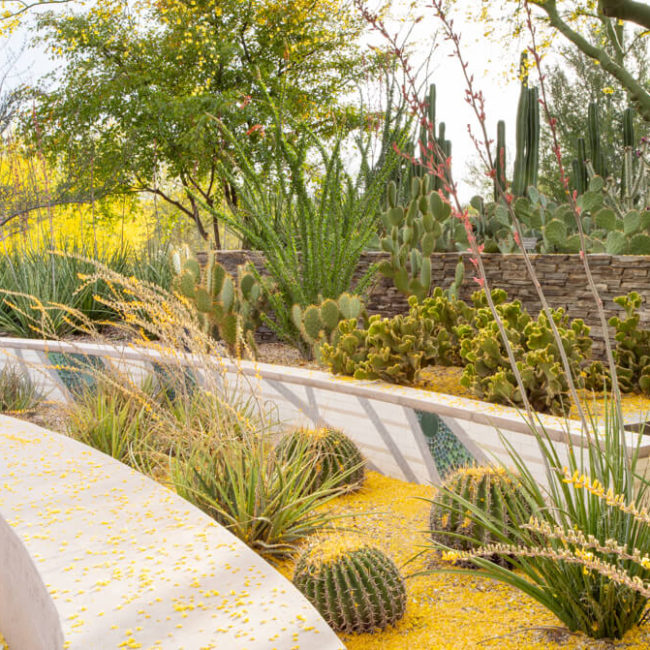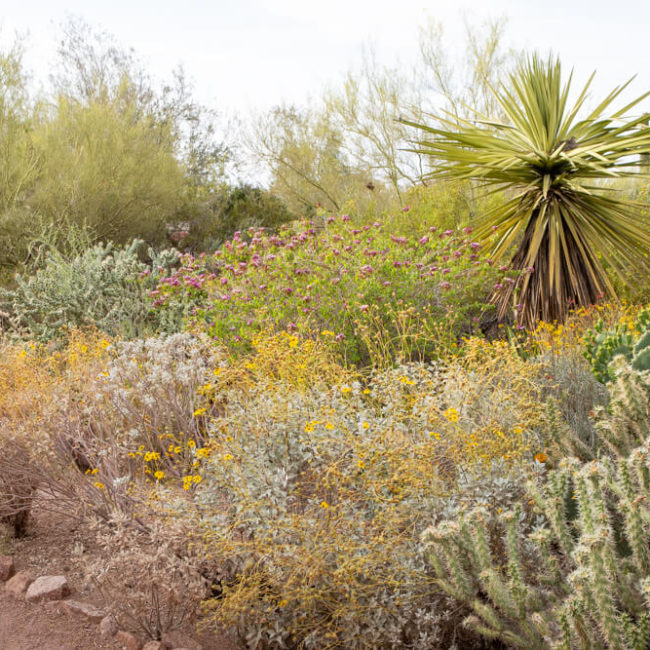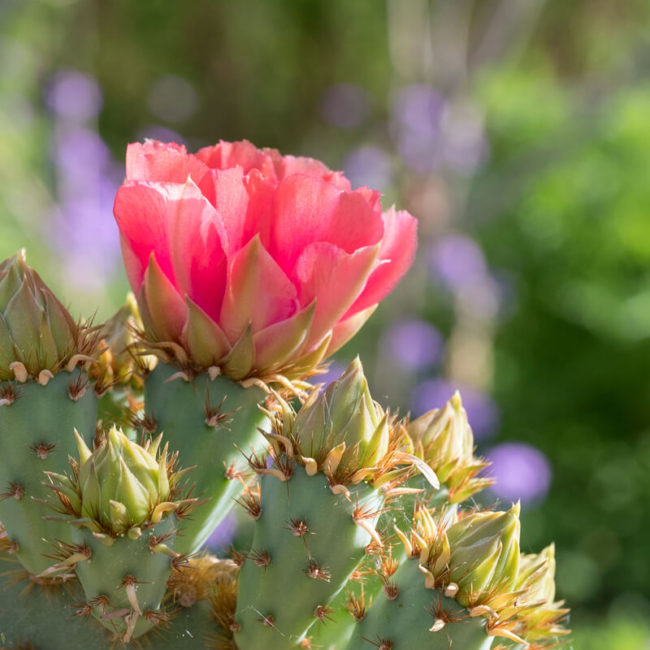Immerse Yourself in the Beauty of the Desert Botanical Garden
Deserts typically conjure images of dry, desolate places that are devoid of life but that couldn’t be further from the truth. They often contain a remarkable amount of biodiversity. Plants have developed amazing adaptations to survive in the harshest environments.
To see firsthand the beauty of the desert, you need to visit the Desert Botanical Garden in Phoenix, Arizona. The 140-acre garden resides among the red rocks and buttes of Papago Park and is home to more than 50,000 plants. You’ll see more cacti than you knew existed, as well as many different types of agaves, yuccas, and aloes. The garden is superbly designed and showcases how desert plants can be used to create spectacular gardens.
Must-see Garden Displays at the Desert Botanical Garden
Five trails meander through the Desert Botanical Garden and take you to displays that represent different arid regions and plant collections. You could easily spend days exploring the gardens. I visited on two occasions, and each time, I was delighted to find new gardens and plant combinations. So, take your time; there are dozens of beautiful corners tucked into this delightful desert gem.
As a whole, the garden is well-designed, but a few sections stood out as especially charming.
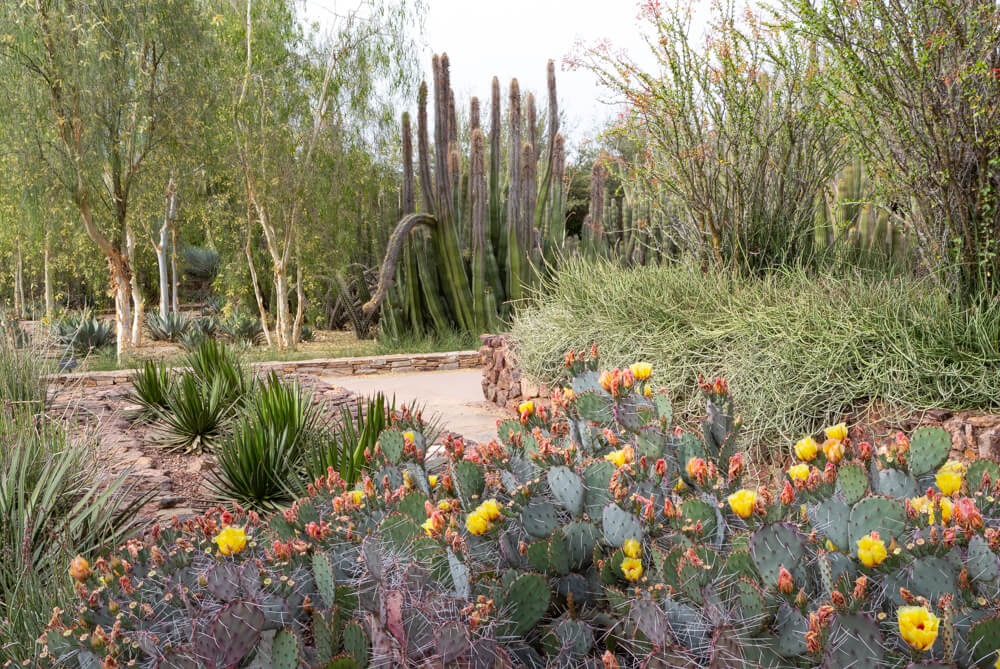
Cacti and agave are planted en masse and their strong geometric shapes create a powerful impact in the Ottosen Entry Garden.
Cacti at the Ottosen Entry Garden
The Ottosen Entry Garden greets visitors with prickly, yet welcome arms. Here, you’ll find hundreds–if not thousands–of cacti. You’ll see the familiar saguaro (Carnegiea gigantea) and prickly pear (Opuntia spp.) cactus, as well as less familiar species like the red cholla cactus (Cylindropuntia x campii) and organ pipe cactus (Stenocereus thurberi). Planted en masse, the garden beds are bursting with cacti. Their prickly pads and thorny stems are corralled by richly colored stone walls that echo the red rocks that surround the garden. Throughout the plaza, you’ll find unique plant combinations and vignettes.
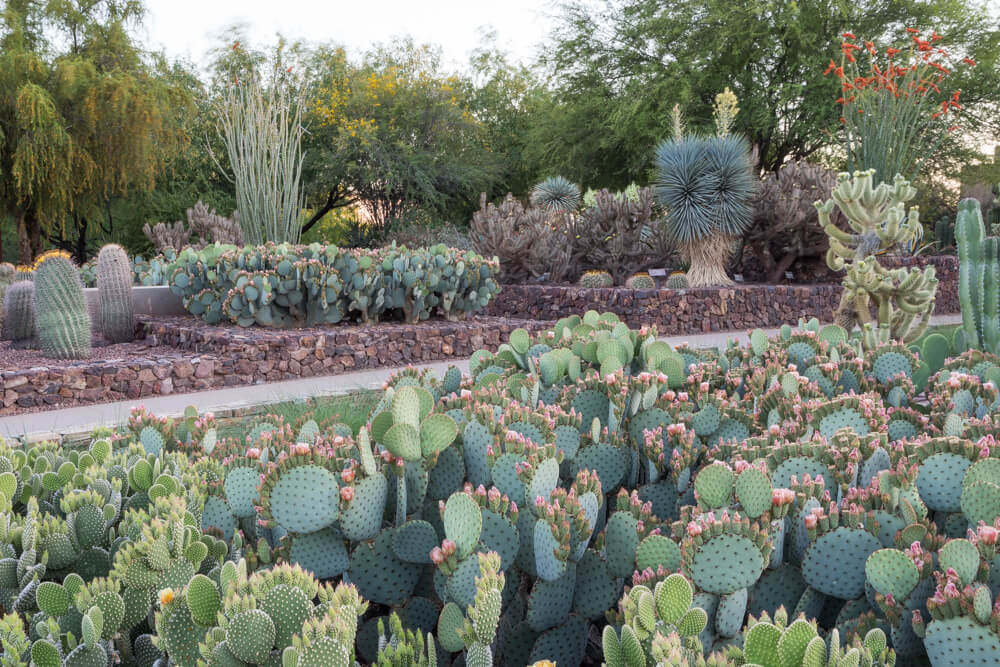
Black-spine prickly pear cacti (Opuntia macrocentra ) fill the beds in the Ottosen Entry Garden.
Desert Discovery Loop Trail
From the entry garden, it gets even better as you make your way towards the Desert Discovery Loop Trail. It’s the star of the garden, and as such, it features a grand entrance. You’ll enter via a gently sloping path that is bordered by two large raised terraces. A rich array of desert plants fills the terraces with contrasting–yet complementary– textures. There are agaves with leaves as smooth as shark skin and cacti that bristle with thorns. Palo verde trees arch over the path, creating a tunnel. In the spring, their yellow blossoms filter the bright desert light, suffusing the garden in gold.

These raised terraces contain a wide variety of plants, but the bold agave and yucca plants are the focal points.
The short path culminates at the Jan and Tom Lewis Desert Portal, where the terraces encircle a large round patio. A low terrace wall makes a great bench to sit and take in the beauty of this superb garden.
From the portal, you can go clockwise or counterclockwise on the short trail. Along the way, you’ll discover cacti and succulents from around the world. The Kitchell Family Heritage Garden is a newer edition and features plants found in Baja California. Giant Mexican cardon (Pachycereus pringlei) cacti tower over the plaza and are truly a sight to behold. I had no idea cacti could grow that large. Being from the Northeast, I was constantly surprised as I strolled through the garden.
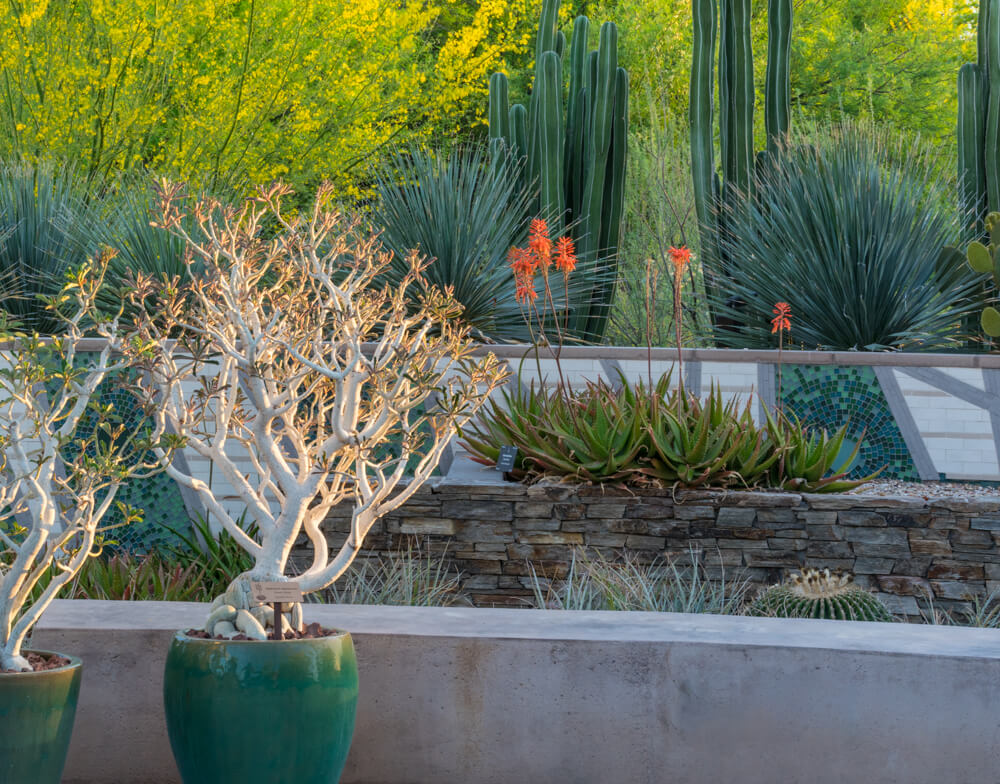
The last rays of sunlight fall on a potted desert rose (Adenium swazicum) plant. Many specimens were scattered throughout the garden.
Harriet K. Maxwell Desert Wildflower Trail
In the desert, water is life. Annual wildflowers are a perfect example of this simple truth. During periods of drought, seeds can lie dormant for years. It’s only when gentle winter rains shower the desert that the sleeping seeds begin to germinate.
Desert annuals grow quickly and erupt into a resplendent show of wildflowers in the spring. Like a patchwork quilt, purple, orange, and yellow blossoms blanket the landscape. The Desert Wildflower Trail gives you a taste of this exuberant display and proves that the desert is more than just rocks and sand. The trail snakes through lush beds that are brimming with wildflowers. Cacti and succulents are interspersed throughout the beds; their bold shapes complement the ephemeral plants.
Native Sonoran flowering shrubs and trees create a soft green backdrop for the wildflowers. The trees also add an element of mystery. As you round a bend in the path, new views and gardens are exposed. Small patios are tucked beneath trees and are an inviting place to relax in the shade.
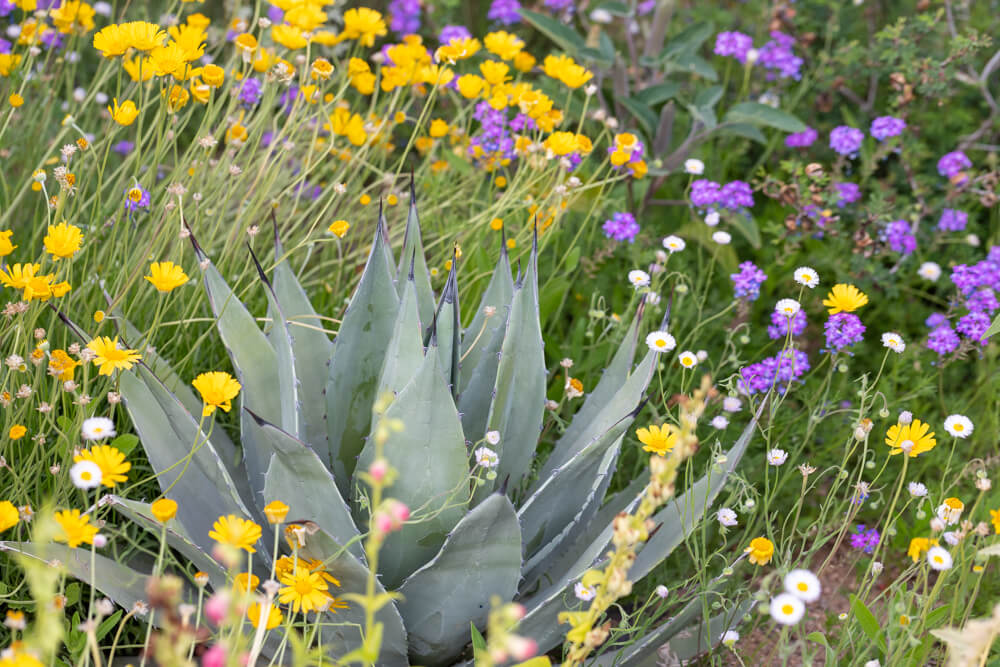
Spring wildflowers complement the strong, bold shape of agave plants.
The Best Time to Visit the Desert Botanical Garden
It’s probably no surprise that summers are hot in Phoenix. Plan your visit to the Desert Botanical Garden so that you can escape the worst of the heat. Spring is the best time to visit, as many of the wildflowers erupt in a brilliant display of color. In April, the palo verde trees start their show and blanket the garden with their yellow blossoms. As spring transitions to summer, the temperature will start to soar. Siestas exist for a reason; in the desert, the afternoons are too hot for most outdoor activities. Try to visit the garden in the morning. In the summer, the Desert Botanical Garden opens early and is a great way to start the day.
It’s a magnificent garden that will introduce you to the beauty of desert environments. If you’re planning a visit to Phoenix, Arizona, make sure the Desert Botanical Garden is on your itinerary.

